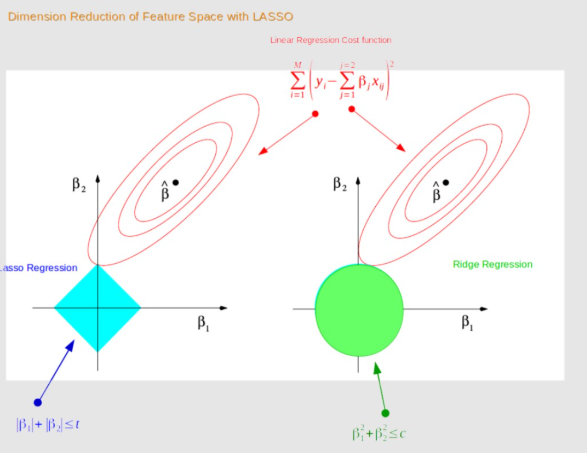In the rapidly evolving healthcare landscape, data-driven decision-making transforms how medical professionals and institutions operate. Pune, a burgeoning technology and healthcare innovation hub, is at the forefront of this revolution. The city’s healthcare analytics sector is leveraging advanced statistical methods like survival analysis to improve patient outcomes, optimise resource allocation, and enhance operational efficiency. For aspiring professionals looking to break into this dynamic field, enrolling in a data analysis course in Pune can provide the skills needed to harness these powerful techniques. This blog explores the application of survival analysis in Pune’s healthcare analytics sector, its significance, methodologies, and real-world impact, engaging readers with insights into this cutting-edge domain.
What is Survival Analysis?
Survival analysis, also known as time-to-event analysis, is a statistical approach to analysing the time it takes for an event of interest to occur. These events could include patient recovery, disease recurrence, or mortality in healthcare. Unlike traditional statistical methods that assume complete data, survival analysis accounts for censored data—cases where the event has not yet occurred by the end of the observation period. This makes it particularly valuable in medical research and healthcare analytics, where patients may drop out of studies or be lost to follow-up.
In Pune’s healthcare sector, survival analysis is applied to diverse areas, such as predicting patient survival rates, assessing treatment efficacy, and managing hospital resources. Analysts can provide actionable insights to clinicians and administrators by understanding the time dynamics of health-related events.
Why Survival Analysis Matters in Healthcare Analytics?
Pune’s healthcare ecosystem, comprising hospitals, research institutes, and tech-driven startups, is increasingly data-centric. Survival analysis offers several benefits that align with the city’s goals of improving healthcare delivery:
- Improved Patient Outcomes: Survival analysis helps clinicians tailor personalised treatment plans by predicting the likelihood of adverse events, such as heart failure or cancer recurrence.
- Resource Optimisation: Hospitals can use survival models to forecast patient discharge times, reducing bed occupancy rates and improving resource allocation.
- Cost Efficiency: Identifying high-risk patients early allows for preventive interventions, reducing long-term healthcare costs.
- Research Advancements: Survival analysis supports clinical trials by evaluating the effectiveness of new drugs or therapies, contributing to Pune’s growing medical research community.
These applications underscore the importance of survival analysis in addressing real-world healthcare challenges, making it a critical skill for Pune’s data analysts.
Key Survival Analysis Techniques
Several statistical methods underpin survival analysis, each suited to specific healthcare applications. Below are some of the most widely used techniques in Pune’s analytics sector:
1. Kaplan-Meier Estimator
The Kaplan-Meier estimator is a non-parametric method used to estimate the survival function, representing the probability of surviving past a given time. In Pune’s hospitals, this technique is applied to analyse patient survival rates for conditions like cancer or cardiovascular diseases. For example, analysts might use Kaplan-Meier curves to compare survival probabilities between patients receiving different treatments, providing visual insights for clinicians.
2. Cox Proportional Hazards Model
The Cox model is a semi-parametric approach that assesses the impact of multiple covariates (e.g., age, gender, or treatment type) on survival time. In Pune, this model is used to identify risk factors for diseases like diabetes or hypertension, enabling targeted interventions. Its flexibility makes it a staple in healthcare analytics, as it can handle complex datasets with multiple variables.
3. Parametric Models
Parametric models, such as the Weibull or exponential models, assume a specific distribution for survival times. Pune’s healthcare startups use these models to predict patient outcomes with high precision, particularly in longitudinal studies. For instance, a startup developing wearable health devices might use parametric models to estimate the time of a critical health event based on real-time patient data.
4. Competing Risks Analysis
In healthcare, patients may experience multiple competing events, such as death from different causes. Competing risk analysis allows analysts to model these scenarios, providing a nuanced understanding of patient outcomes. In Pune, this technique is applied in geriatric care to assess the likelihood of various age-related conditions.
Real-World Applications in Pune’s Healthcare Sector
Pune’s healthcare analytics sector is thriving, with hospitals, research centres, and tech companies adopting survival analysis to drive innovation. Here are some practical applications:
1. Oncology Research
Pune is home to several cancer research institutes that use survival analysis to evaluate treatment outcomes. By analysing time-to-event data, researchers can determine the effectiveness of chemotherapy versus immunotherapy, informing clinical guidelines. For example, a study might use the Cox model to assess how genetic markers influence survival rates in breast cancer patients.
2. Hospital Operations
Major hospitals in Pune, such as Ruby Hall Clinic and Sahyadri Hospitals, leverage survival analysis to optimise operations. By predicting patient length of stay, hospitals can streamline bed management and reduce waiting times. Kaplan-Meier estimates help administrators visualise discharge patterns, improving resource planning.
3. Public Health Initiatives
Pune’s public health sector uses survival analysis to address chronic diseases like diabetes and tuberculosis. Health officials can design targeted awareness campaigns and interventions by identifying high-risk populations. For instance, competing risk models might be used to study the interplay between diabetes and cardiovascular events, guiding preventive strategies.
4. Health Tech Startups
Pune’s vibrant startup ecosystem is integrating survival analysis into digital health solutions. Companies developing AI-powered diagnostic tools or telemedicine platforms use survival models to predict disease progression. These insights enhance the accuracy of predictive algorithms, improving patient care.
Challenges and Opportunities
While survival analysis offers immense potential, its implementation in Pune’s healthcare sector faces challenges:
- Data Quality: Incomplete or inconsistent patient records can hinder accurate modelling. Addressing this requires robust data governance frameworks.
- Skill Gaps: Survival analysis’s complexity demands specialised training. Data analysts must be proficient in statistical software like R or Python and have domain-specific knowledge.
- Ethical Considerations: Handling sensitive patient data raises privacy concerns. Analysts must adhere to regulations like HIPAA and India’s DPDP Act.
Despite these challenges, opportunities abound. Pune’s growing emphasis on healthcare technology and its pool of skilled professionals position the city as a leader in analytics-driven healthcare. Pune can overcome these hurdles by investing in training programs and fostering collaborations between hospitals and tech firms.
The Role of Data Analysts in Pune
Data analysts are the backbone of Pune’s healthcare analytics sector, translating raw data into actionable insights. Professionals skilled in survival analysis are in high demand, as they can bridge the gap between statistical modelling and clinical applications. For those aspiring to enter this field, a data analyst course provides a comprehensive foundation in statistical techniques, programming, and healthcare domain knowledge.
These courses typically cover:
- Statistical methods like survival analysis and regression modelling.
- Tools such as R, Python, and SAS for data analysis.
- Data visualisation techniques to communicate insights effectively.
- Real-world case studies from healthcare analytics.
By equipping professionals with these skills, Pune’s educational institutions are nurturing the next generation of data analysts who will drive healthcare innovation.
Conclusion
Survival analysis is revolutionising Pune’s healthcare analytics sector, enabling stakeholders to make informed decisions that enhance patient care and operational efficiency. From predicting survival rates to optimising hospital resources, this statistical approach unlocks new medical research and public health possibilities. As Pune continues to emerge as a hub for healthcare innovation, the demand for skilled data analysts will only grow. Enrolling in a data analytics course is a strategic step for professionals looking to contribute to this transformative field. By mastering survival analysis and other advanced techniques, analysts can play a pivotal role in shaping the future of healthcare in Pune and beyond.
Business Name: ExcelR – Data Science, Data Analyst Course Training
Address: 1st Floor, East Court Phoenix Market City, F-02, Clover Park, Viman Nagar, Pune, Maharashtra 411014
Phone Number: 096997 53213
Email Id: enquiry@excelr.com










